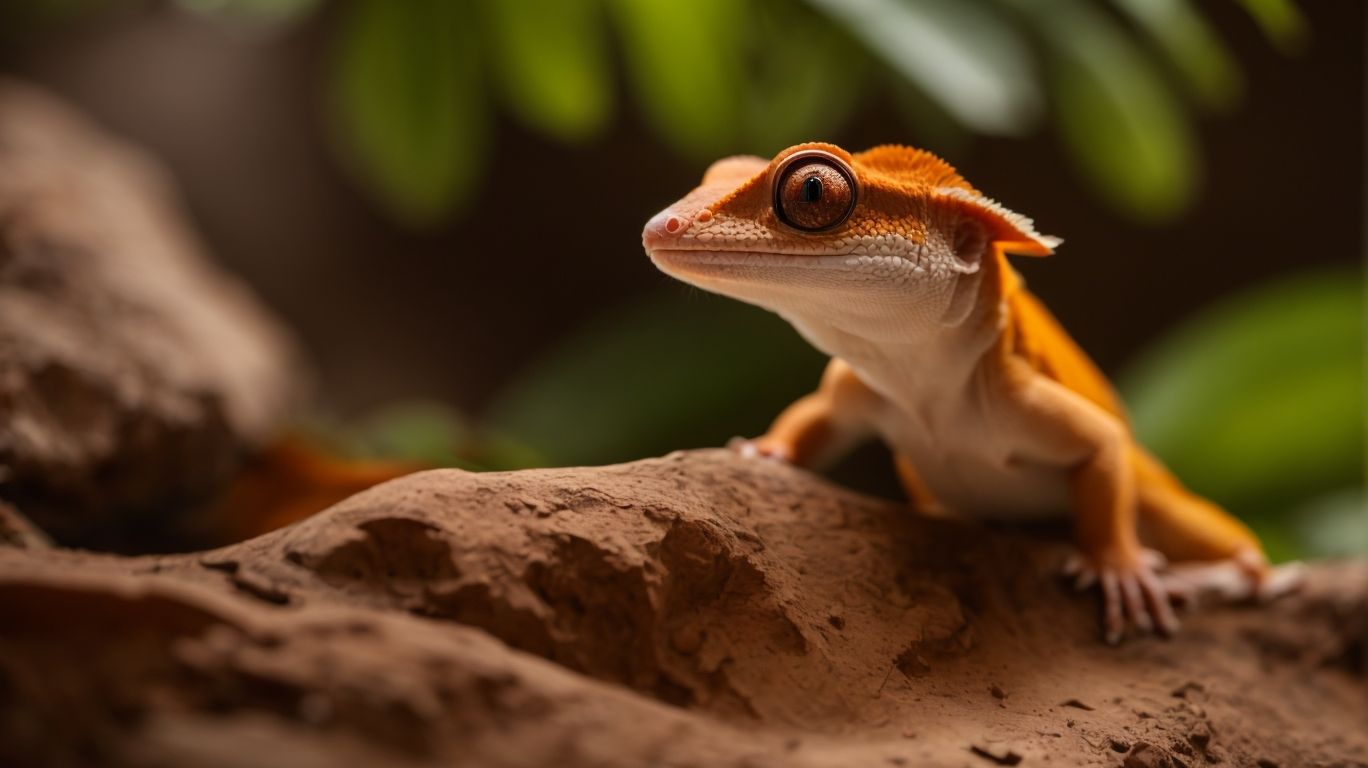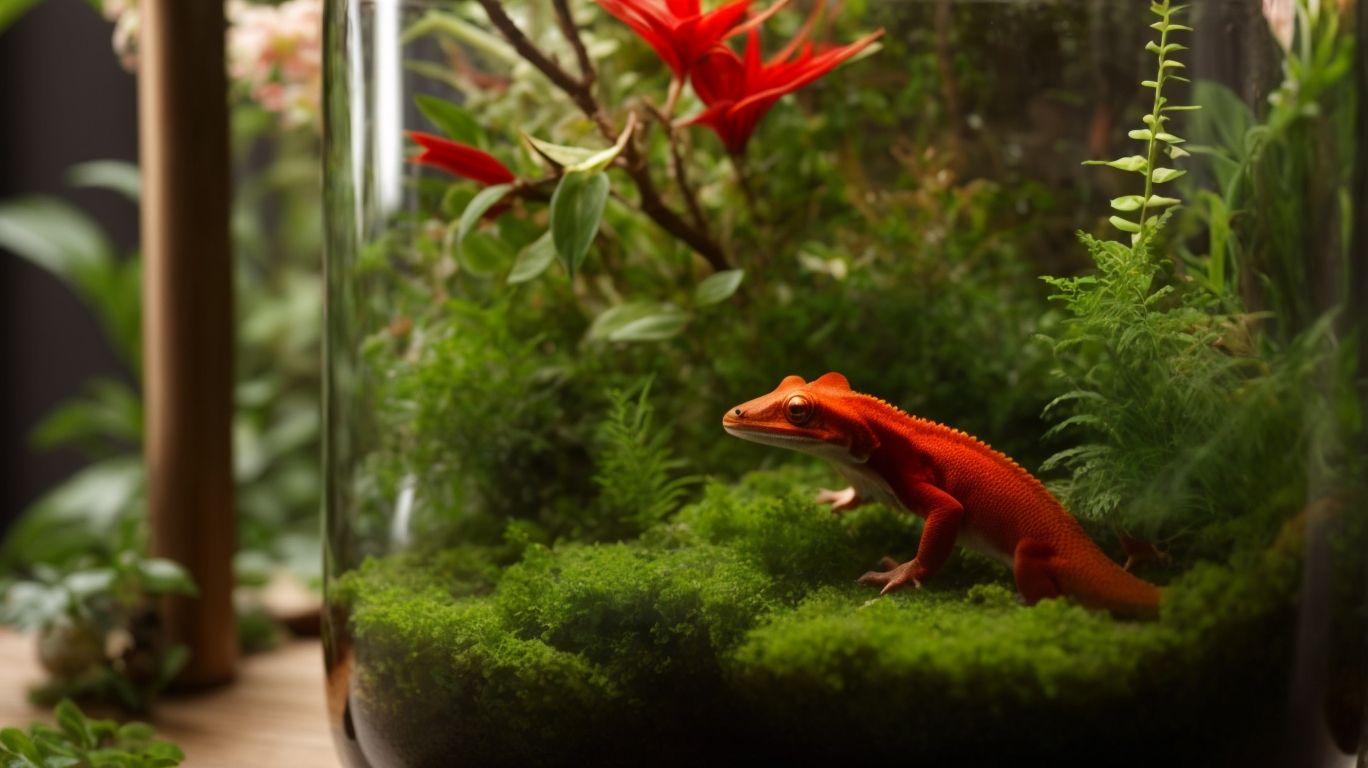
Caring for Red Crested Geckos: Special Needs and Considerations
Red crested geckos are fascinating pets that require special care and attention to thrive in captivity. In this article, we will explore the unique needs of red crested geckos, including their temperature and humidity requirements, diet and nutrition, habitat setup, and handling techniques.
We will also discuss common health issues that affect these geckos and provide tips for providing proper care. Whether you’re a new or experienced gecko owner, this article will help you ensure the well-being of your red crested gecko.
What Are Red Crested Geckos?
Red Crested Geckos, also known as Correlophus ciliatus, are a species of exotic lizard belonging to the reptile family.
These geckos are primarily found in New Caledonia, a group of islands in the South Pacific. Their vibrant red coloration and distinct crests running from their eyes to the base of their tail make them a popular choice for reptile enthusiasts.
Red Crested Geckos are known for their docile demeanor and are relatively easy to care for, making them an ideal pet for beginners and experienced keepers alike. Their arboreal nature means they require a tall enclosure with plenty of branches and foliage to climb and hide in. Providing a humid environment and a varied diet consisting of insects, fruits, and supplements is crucial to their health and well-being.
What Are the Special Needs of Red Crested Geckos?
Caring for Red Crested Geckos entails understanding and addressing their special needs, encompassing considerations related to habitat, diet, temperature, humidity, lighting, handling, and health.
Temperature and Humidity Requirements
Maintaining optimal temperature and humidity levels is crucial for the well-being of Red Crested Geckos. This requires a suitable terrarium setup with adequate UVB lighting.
Red Crested Geckos thrive in temperatures between 70-80°F during the day and a slight drop to 65-75°F at night. Humidity levels should be maintained at 60-80%, mimicking their natural habitat.
UVB lighting is essential for their calcium metabolism and bone health, crucial for preventing metabolic bone disease. The ideal terrarium conditions include a mix of live plants, a proper substrate, hiding spots, and adequate ventilation. Monitoring and maintaining these conditions is vital for the overall health and longevity of these fascinating reptiles.
Diet and Nutrition
The diet and nutrition of Red Crested Geckos play a critical role in their overall health, requiring a balanced feeding regimen with proper supplementation of calcium, phosphorus, and essential vitamins through gut-loading and dusting.
Geckos are primarily insectivorous, so it’s important to offer them a variety of live insects like crickets, roaches, and mealworms. It’s crucial to gut-load these insects with nutritious foods to ensure the geckos receive adequate nutrients.
A balanced diet for geckos should also include fruit and commercially prepared gecko diet for a well-rounded nutritional intake. Proper hydration is equally important, so make sure to mist their enclosure and provide a shallow water dish for their well-being.
Habitat and Enclosure Setup
Creating a suitable habitat and enclosure setup for Red Crested Geckos involves considerations such as substrate selection, environmental cleanliness, and opportunities for enrichment, especially for captive-bred individuals.
The substrate for Red Crested Geckos should ideally mimic their natural environment. This can be achieved by providing a mix of sphagnum moss, coconut fiber, and bark, which aids their burrowing and climbing tendencies.
Regular maintenance and cleanliness of the enclosure are crucial for the overall health of these geckos. This helps prevent the buildup of bacteria and parasites. Additionally, incorporating enrichment opportunities such as plants, branches, and hiding spots can stimulate their natural behaviors and activity levels, promoting physical and mental well-being.
Handling and Socialization
Proper handling and socialization of Red Crested Geckos require a cautious approach to minimize stress and aggression, particularly for individuals in captivity, whether captive-bred or wild-caught.
When handling Red Crested Geckos, it’s important to approach them gently and avoid sudden movements. Captive-bred geckos may be more tolerant of human interaction, but wild-caught individuals may require more time to adjust.
Providing ample hiding spots and climbing areas in their habitat can help reduce stress. When socializing these geckos, it’s advisable to observe their body language for signs of discomfort. Regular, gentle interaction can help build trust and reduce stress for a healthier, happier gecko.
What Are the Common Health Issues of Red Crested Geckos?
Understanding the common health issues of Red Crested Geckos is essential for proactive care. This includes aspects such as behavior, stress management, respiratory infections, parasite control, quarantine procedures, and environmental cleanliness.
Proper preventive measures are crucial in enhancing the well-being of Red Crested Geckos. Striving to maintain a clean and hygienic environment plays a pivotal role in averting health challenges.
To mitigate risks, rigorous quarantine protocols should be established for any new specimens entering the habitat. It’s essential to monitor for signs of respiratory infections and promptly address any symptoms.
Regular parasite control measures should be integrated into their care routine to safeguard their health and ensure a thriving gecko community.
Metabolic Bone Disease
Metabolic bone disease can pose a significant threat to the health of Red Crested Geckos, often stemming from imbalances in calcium, phosphorus, and inadequate dietary supplementation.
This condition is characterized by weakened bones, deformities, and soft tissue calcification.
Insufficient calcium and excess phosphorus in the diet can disrupt the gecko’s ability to metabolize and utilize these essential minerals, leading to bone abnormalities.
Common symptoms include tremors, bone fractures, and difficulty moving.
To prevent metabolic bone disease, it is crucial to provide a well-balanced diet rich in calcium and low in phosphorus, supplemented with vitamin D3 for proper absorption.
Regular access to UVB light is also essential for calcium metabolism, promoting overall skeletal health.
Respiratory Infections
Respiratory infections can impact the well-being of Red Crested Geckos, often influenced by factors such as environmental cleanliness and habitat conditions.
Respiratory infections in geckos can present with symptoms such as wheezing, gasping, nasal discharge, and reduced appetite. To prevent these issues, it’s important to maintain proper ventilation and humidity levels in the gecko’s enclosure.
Regular cleaning of the terrarium, including removing waste and providing a clean water source, is crucial for preventing the spread of infections. Additionally, ensuring that the gecko’s environment is free from irritants like dust and mold can further promote their respiratory health.
Parasites
Parasitic infestations can compromise the health of Red Crested Geckos, necessitating proactive measures such as quarantine, cleanliness, and strategic gut-loading practices.
Taking proactive measures is crucial in preventing parasitic infestations in Red Crested Geckos. These infestations can lead to digestive problems, weight loss, and even death. It’s important to implement quarantine procedures for new geckos to prevent the introduction of parasites into the existing enclosure.
Maintaining a clean environment is also essential in minimizing the risk of parasites. This includes regularly removing waste and debris. Additionally, gut-loading feeder insects with nutritious and parasite-free food before feeding them to the geckos can boost their immunity and reduce the likelihood of infestation.
How to Provide Proper Care for Red Crested Geckos?
Providing proper care for Red Crested Geckos entails regular health checks, meticulous attention to habitat conditions, dietary considerations, temperature and humidity management, and safe handling practices.
Regular Health Checks
Regular health checks are essential for Red Crested Geckos, involving close monitoring of behavior, nutritional intake, and overall well-being to detect any potential issues early on.
This includes observing their activity levels, appetite, and signs of stress or discomfort.
By keeping a close eye on their diet, ensuring they receive the proper balance of calcium and vitamin D3, and making adjustments as needed, owners can help prevent metabolic bone disease and other nutritional deficiencies.
Early intervention is crucial in addressing any health concerns, as prompt veterinary care can make a significant difference in the well-being and longevity of these unique reptiles.
Monitoring Temperature and Humidity
Regular monitoring of temperature and humidity levels is crucial for the proper care of Red Crested Geckos, especially for individuals in a captive-bred environment.
Maintaining optimal temperature and humidity is essential to replicate their natural habitat and support their overall well-being. Captive-bred geckos are particularly sensitive to fluctuations, so it’s important to create a stable environment.
Ensuring the temperature remains between 75-82°F during the day and slightly cooler at night, along with a humidity level of 60-70%, mimics the conditions they thrive in. Suboptimal conditions can lead to stress, dehydration, and susceptibility to respiratory infections, underscoring the significance of diligent monitoring for their health and longevity.
Providing a Balanced Diet
Ensuring a balanced diet is vital for the well-being of Red Crested Geckos, involving appropriate feeding practices and the supplementation of essential nutrients, including calcium, phosphorus, and vitamins through gut-loading and dusting.
To mimic their natural diet, it is crucial to provide a variety of live insects such as crickets, roaches, and mealworms. In addition, Red Crested Geckos can benefit from occasional servings of fruits like mango, papaya, and figs. These fruits offer essential vitamins and natural sugars that support their growth, bone health, and overall metabolic functions.
It is important to maintain a balance of protein, calcium, and vitamins in their diet. This will ensure their long-term well-being. Additionally, regularly providing access to clean water and monitoring the impact of their diet on their health is essential for these fascinating reptiles.
Maintaining a Clean Habitat
Maintaining a clean habitat is essential for the overall well-being of Red Crested Geckos, requiring meticulous attention to substrate cleanliness and environmental hygiene.
To maintain the health of Red Crested Geckos, it is important to regularly remove feces, uneaten food, and shedding skin from their enclosure. This helps prevent the buildup of harmful bacteria and parasites. It is recommended to establish a proper cleaning schedule to ensure the geckos’ well-being.
Keeping the substrate clean and dry is crucial in preventing mold and bacterial growth. It is important to regularly change and clean the substrate to create a healthy and hygienic environment for these delicate creatures. Additionally, maintaining clean and sanitized environmental elements such as rocks, branches, and other decorative items is essential in preventing the spread of diseases and maintaining a safe habitat for Red Crested Geckos.
Handling and Socialization Techniques
Implementing appropriate handling and socialization techniques is crucial for reducing stress and aggression, especially for Red Crested Geckos in a captive environment, whether captive-bred or wild-caught.
Understanding the individual nature of Red Crested Geckos is essential when it comes to developing effective socialization strategies. Captive-bred geckos, having been raised in controlled environments, may display different behaviors compared to their wild-caught counterparts.
For instance, captive-bred geckos might be more accustomed to human interaction and handling, whereas wild-caught geckos may require a more patient and gradual approach. By observing their body language and responses, one can better gauge how to tailor the socialization process to each gecko’s specific needs, ensuring a harmonious and stress-free environment for these unique reptiles.




No Comments